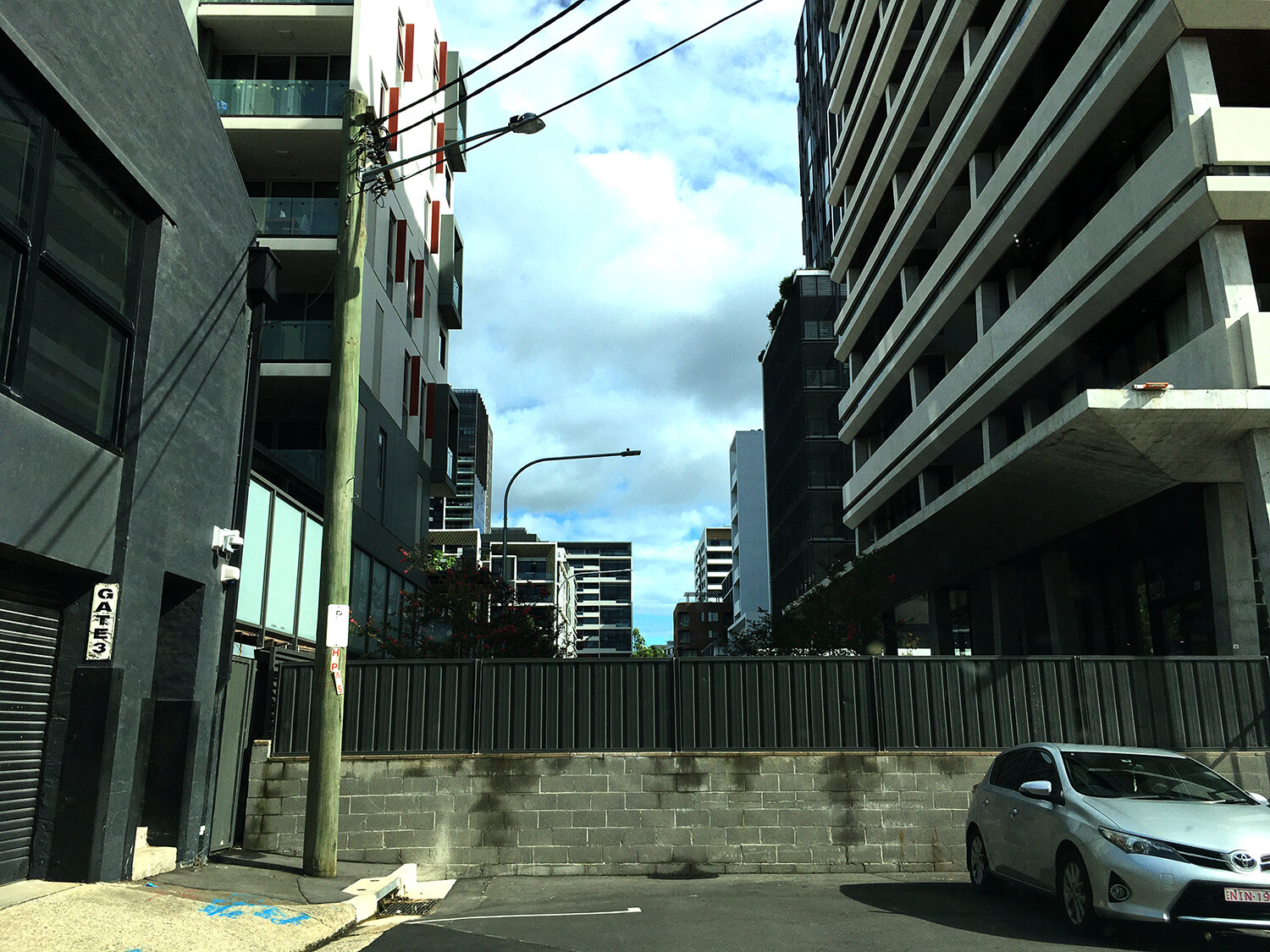Elizabeth Street, Newtown on Sunday 17 May 2020
I have never been in that street before. It’s where City Road becomes King Street, just before Missenden Road. It’s only a short lane and leads to the backside of the King Street shops and restaurants. I find it fascinating to see the unpolished side of all these places, where the empty food boxes and milk crates are stored, a drum with cooking oil, a baby chair, and a makeshift shed. Some material hangs on a back gate to a yard that looks like a raincoat for a dead animal.
On the other side are the backyards of a row of terrace houses of yet another lane. At the end is a fenced-in part of Sydney University with student accommodation.
It is Sunday late afternoon. The sun just came out from the clouds to say good night, highlighting the graffiti message ‘The World Is Yours’. At a corner a car lurks like a living being, ready to pounce.
Restaurants are allowed to have guests, ten at a time, for the first time since the lockdown. When I walk past the windows in King Street I see some people sitting at tables which has become an unusual sight. Not all tables are used. That would be too crowded. Staff is wiping down the surfaces more carefully than ever, it seems.


























































































































































